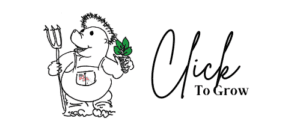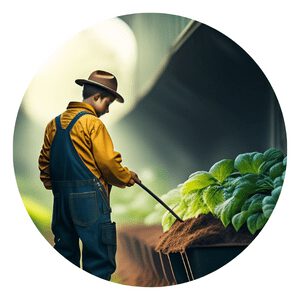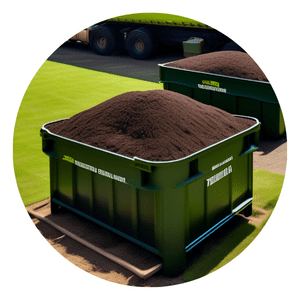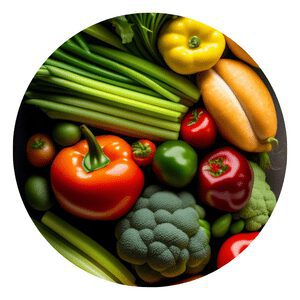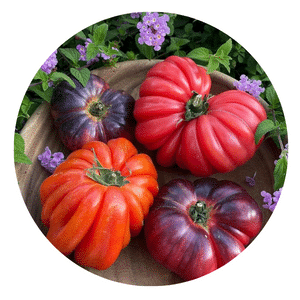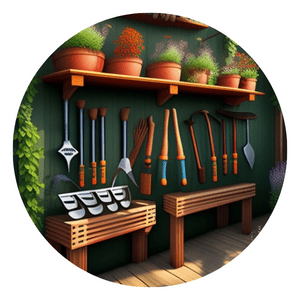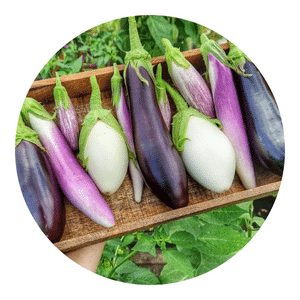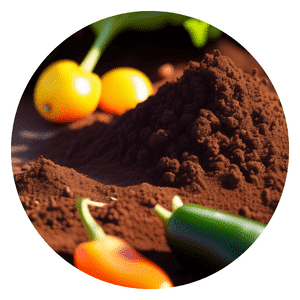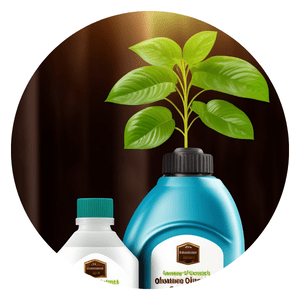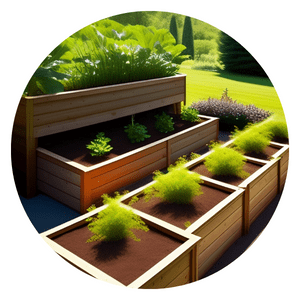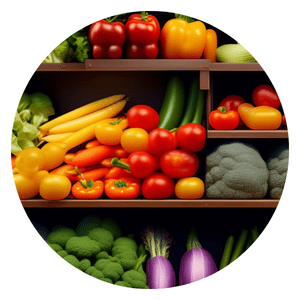How Do You Create Organic Crop Plan?
Organic farming has gained significant popularity in recent years as consumers become more conscious of the impact their food choices have on the environment and their health.
Creating an organic crop plan is a crucial step for farmers looking to transition from conventional to organic methods, as it requires careful consideration of various factors such as soil health, pest control, and crop rotation.
In this article, we will explore the essential components of an organic crop plan and delve into the strategies that farmers can employ to ensure a successful transition to organic farming practices.
Whether you’re a seasoned farmer or someone interested in sustainable agriculture, understanding how to create an effective organic crop plan is key to achieving long-term success in this rapidly growing field.
Crop Plan Menu
Evaluate Your Space
When it comes to creating an organic crop plan, evaluating your garden space is crucial.
Begin by assessing the available garden space, including soil quality, sunlight, and microclimates. These factors play a significant role in determining what crops will thrive in your garden.
Firstly, consider the soil quality. Take a sample of your soil and send it for testing to determine its composition and nutrient levels. This will help you understand if any amendments are needed before planting. Some crops may require specific pH levels or nutrient profiles for optimal growth.
Secondly, evaluate the amount of sunlight your garden receives throughout the day.
Different plants have varying light requirements—some prefer full sun while others thrive in partial shade. By knowing how much sunlight each area of your garden receives, you can strategically plan which crops to plant where.
Lastly, consider microclimates within your garden space.
Microclimates are small areas with unique climate conditions caused by factors like shade from buildings or trees, wind patterns, or even water bodies nearby. These microclimates can influence temperature and moisture levels in specific areas of your garden and may create opportunities for growing different types of plants.
By evaluating these aspects of your garden space beforehand, you can make informed decisions when it comes to selecting crops that will not only survive but thrive organically in your specific environment.
Remember that every piece of land is unique; assess it thoroughly to unlock its true potential for organic crop cultivation!
Set Goals
When it comes to creating an organic crop plan, one of the most important steps is clearly defining your goals for the garden.
Are you growing solely for personal consumption? Do you have plans to sell your produce at a farmers’ market or local grocery stores? Perhaps your intention is to donate a portion of your harvest to a local food bank.
Identifying and prioritizing these goals will help guide your decision-making process throughout the planning and cultivation stages.
If your goal is personal consumption, you can focus on growing a variety of fruits, vegetables, and herbs that meet the specific needs and preferences of your household.
Consider factors such as nutritional value, taste preferences, and dietary restrictions when choosing what crops to plant.
By concentrating on crops that fulfill these criteria, you can create an abundant supply of fresh, organic produce for yourself and minimize trips to the grocery store.
On the other hand, if selling at a farmers’ market or retail outlets is part of your plan, it’s important to consider consumer demand in addition to personal preferences.
Research popular crops in your area or talk with potential customers at local markets or community events. This knowledge will help determine what fruits and vegetables are likely to sell well and generate income for your efforts.
Lastly, if giving back to the community through donations is one of your motivations for gardening organically, consider reaching out to nearby food banks or organizations involved in hunger relief initiatives.
Crop Selection
Choosing the right crops for your organic farm is crucial to its success.
To ensure a thriving harvest, it’s important to select crops that are well-suited to your region’s climate and growing conditions.
Native varieties have evolved over time to adapt and thrive in their specific environments, making them more resistant to pests and diseases.
By choosing native crops, you can reduce the need for external interventions such as pesticides, herbicides, and irrigation.
Another factor to consider when selecting crops is your goals as an organic farmer.
Are you primarily focused on providing fresh produce directly to local consumers?
Or are you interested in processing certain crops into value-added products like jams or sauces?
Understanding your goals can help inform which crops will be most profitable and fulfilling for you. Additionally, heirloom varieties can add unique flavors and visual diversity to your farm while preserving historical agricultural practices.
Ultimately, a successful organic crop plan involves careful consideration of both regional suitability and personal goals.
By choosing native plants that align with your farming objectives, you can create a sustainable system that not only benefits the environment but also supports a thriving organic farm business.
In the garden's quiet embrace, A dance of balance takes its place. With care and thought, you sow the seed, Merging art and science, indeed. First, observe the soil's diverse hues, Then, rotate crops to keep pests confused. Embrace diversity, let nature unfold, An organic crop plan, a story untold.
Chappy The Gardener
Crop Rotation
Crop rotation involves strategically alternating the crops grown in specific areas of your farm each year to prevent soil depletion and control pests and diseases naturally.
By changing the types of plants grown in each area, you can break up pest and disease cycles, reducing the need for chemical interventions.
One major benefit of crop rotation is that it helps maintain healthy soil. Different types of crops have different nutrient requirements, and by rotating crops each season, you can ensure that the soil does not become depleted in any particular nutrient.
For example, leguminous plants like beans and peas have the ability to fix nitrogen from the atmosphere into the soil. By including legumes in your rotation plan, you can increase soil fertility naturally.
Another advantage of implementing crop rotation is pest control.
Many pests are specific to certain plant species or families. By alternating crops annually, you can disrupt their life cycles and reduce their populations without relying on chemical pesticides. Additionally, some plants have natural insect-repellent properties or attract beneficial insects that prey on pests.
Incorporating these plants into your rotation plan can further assist in managing pests organically.
Overall, implementing a crop rotation plan is essential for sustainable organic farming practices. It not only helps prevent soil depletion but also aids in controlling pests and diseases without resorting to chemical
Companion Planting
Companion planting is a fascinating technique that involves strategically planting different crops together to enhance their growth and protect them from pests.
By pairing certain plants, you can create a natural pest control system where certain plants repel insects or attract beneficial ones.
For example, marigolds release chemicals into the soil that repel nematodes, making them an excellent companion for tomato plants. Additionally, interplanting legumes like beans or peas with nitrogen-hungry crops such as corn or broccoli helps fix nitrogen in the soil, enriching it for neighboring plants.
Furthermore, companion planting offers efficient space optimization in your garden. Intercropping taller and shorter plants maximizes space utilization by ensuring every inch of soil is utilized efficiently.
For instance, climbing plants like beans or cucumbers can be grown alongside tall crops such as corn to make use of vertical growing space while providing shade and support for the climbers.
Additionally, fast-growing early-season vegetables like radishes or lettuce can be planted between rows of slower-growing late-season vegetables to ensure continuous productivity throughout the garden plot.
In conclusion, incorporating companion planting techniques into your organic crop plan provides numerous benefits ranging from natural pest control to nutrient sharing and space optimization.
By understanding which plants complement each other’s growth patterns and capabilities, you can create a harmonious ecosystem within your garden.
So why not experiment with companion planting this season? Your organic crops will thank you for it!
Soil Health
Soil health is the foundation of organic farming practices.
Without healthy soil, it is impossible to achieve sustainable and productive crop growth. That’s why prioritizing soil health through organic practices like composting, mulching, and cover cropping is crucial for organic farmers.
Composting is a simple yet effective way to improve soil health.
By recycling organic waste materials such as kitchen scraps and yard trimmings into nutrient-rich compost, farmers can enhance the fertility and structure of their soil.
Compost provides essential nutrients that are slowly released over time, improving plant growth and overall soil health.
Mulching is another key practice that helps protect the soil from erosion, weed infestation, and extreme temperature fluctuations.
By covering the bare ground with materials like straw or wood chips, mulch helps retain moisture in the soil while adding organic matter to improve its structure. This not only supports beneficial microbes in the soil but also reduces the need for synthetic fertilizers or pesticides.
Cover cropping involves planting specific crops (usually grasses or legumes) during fallow periods to cover bare ground. These cover crops help prevent erosion by holding onto fertile topsoil with their roots while reducing nutrient leaching from heavy rainfalls.
Moreover, when these cover crops are plowed back into the ground before planting cash crops, they add organic matter to enrich the soil even further.
Ultimately, by prioritizing these organic practices – composting, mulching, and cover cropping – farmers ensure that their soils stay healthy and productive for years to come.
Succession Planting
One of the key concepts in creating an organic crop plan is succession planting. This technique involves planning for multiple cycles of planting and harvesting within a single season, which can help optimize space and extend your harvest. It’s all about utilizing your growing areas efficiently and maximizing the potential of each square foot.
Succession planting allows you to make the most out of limited resources such as soil fertility, water availability, and sunlight exposure.
By staggering your plantings, you ensure that there is always something growing in every available space, reducing the risk of weeds taking over and improving overall productivity.
Additionally, by planning for multiple cycles of planting and harvesting, you can minimize downtime between crops and continually reap fresh produce throughout the season.
Another benefit of succession planting is its ability to create a more balanced harvest schedule.
Rather than having an overwhelming abundance all at once or long periods without any harvestable crops, this method allows for a steady supply over time. This not only makes managing your harvests more manageable but also ensures that you have a consistent stream of fresh produce to enjoy.
In conclusion, incorporating succession planting into your organic crop plan is an excellent strategy to optimize space utilization and extend your harvest season.
By planning for multiple cycles of planting and harvesting within a single season, you can make the most out of limited resources while ensuring a steady supply of fresh produce throughout the yea
Plant Spacing
Determining the appropriate plant spacing is an essential aspect of creating an organic crop plan.
It ensures that your crops have enough room to grow and access sunlight, which are crucial for their overall health and yield. But how do you determine the ideal plant spacing?
One approach is to consider the specific needs of each crop.
Some plants, like pumpkins or squash, require more space due to their sprawling nature. Giving them ample room between plants allows for better air circulation and reduces the risk of fungal diseases.
On the other hand, smaller plants such as lettuce or radishes can be spaced closer together since they don’t need as much space to reach maturity.
Another factor to consider when determining plant spacing is light requirements.
Sun-loving crops like tomatoes or peppers thrive when they receive sufficient sunlight throughout the day. By giving them proper spacing and avoiding overcrowding, you ensure that each plant gets enough light exposure.
Additionally, considering intercropping techniques can maximize space utilization in your garden while meeting the needs of different crops simultaneously.
Intercropping involves growing compatible plants together in a way that maximizes resources like water, nutrients, or sunlight.
For example, planting tall corn alongside shorter beans provides natural trellis support for climbing beans while conserving space in your garden.
In conclusion, determining appropriate plant spacing based on individual crop needs is vital for successful organic gardening.
By considering factors such as spreading habits and light requirements, you can provide each plant with adequate room to flourish and access sunlight effectively.
Crop Protection
As organic farming continues to gain popularity, it becomes increasingly important to develop effective strategies for protecting crops from pests and diseases without relying on synthetic chemicals.
One approach is the use of row covers, which can physically prevent insects from reaching your plants. These covers create a barrier that not only keeps harmful pests at bay but also provides an ideal microclimate for crop growth.
By using row covers, farmers can reduce the need for chemical insecticides and promote healthier, more vibrant plants.
Another innovative tactic in organic crop protection is the introduction of beneficial insects. These natural predators can help control pest populations by feeding on them or their eggs.
For example, ladybugs are voracious eaters of aphids, while lacewings devour several different types of garden pests. Introducing these beneficial insects into your fields or gardens can significantly reduce the need for chemical interventions while creating a balanced ecosystem where nature takes care of itself.
Plus, it’s a sustainable solution that doesn’t harm the environment or compromise human health.
By embracing organic strategies like row covers and introducing beneficial insects into your crop management plan, you’re not only safeguarding your harvests but also contributing to a more sustainable agricultural system. These techniques allow you to protect your crops without relying on synthetic chemicals that harm beneficial organisms and pose risks to human health.
As we strive towards a greener future, exploring alternative methods like these will be crucial in maintaining healthy ecosystems and abundant yields year after year.
Water Management
One of the key aspects of creating an organic crop plan is efficient water management.
Water is a precious resource, and it’s important to use it wisely to minimize waste and ensure the health and success of your crops.
One effective method to conserve water is through drip irrigation.
Drip irrigation involves delivering water directly to the roots of plants, minimizing evaporation and reducing the risk of overwatering. This method not only conserves water but also helps reduce the risk of soil-borne diseases that can occur when leaves come into contact with standing moisture or excessive watering.
By using drip irrigation, you can target specific areas where plants need moisture the most, ensuring optimal growth while reducing overall water usage.
Additionally, this method allows for easy adjustment based on weather conditions or plant needs.
Overall, adopting efficient watering methods like drip irrigation is essential in organic farming to promote sustainability and preserve our valuable water resource
Record Keeping
Keeping accurate and detailed records of your gardening activities is an essential component of creating a successful organic crop plan.
It not only helps you keep track of important dates such as planting and harvesting but also allows you to identify patterns and trends that can be used to improve future crops.
By noting down the specific varieties planted, the amount harvested, and any issues encountered (such as pests or diseases), you can make informed decisions about what works best in your garden.
Furthermore, record keeping can serve as a valuable tool for troubleshooting problems that may arise. If you encounter low yields or poor growth in certain areas of your garden, looking back at past records can help pinpoint potential causes.
Perhaps the soil pH was off for a particular crop or there were recurring pest issues during a certain time period.
With this information at hand, you can take proactive steps to mitigate these challenges in the future.
Overall, maintaining detailed records creates a foundation for success in organic gardening. It allows you to track progress over time, identify areas for improvement, and troubleshoot any problems that arise along the way.
By committing to thorough record keeping practices from the start, you position yourself for long-term success and greater yields in your organic garden.
Sustainability
One way farmers can emphasize sustainability is by reducing waste on their farms. This can be achieved by implementing practices such as composting, which not only reduces waste but also provides nutrient-rich soil for crops.
Additionally, farmers can explore ways to recycle materials used on their farms, such as plastic containers and packaging.
Conserving resources like water and energy is another essential aspect of sustainable crop planning.
With climate change and increased global water scarcity being pressing issues, efficient irrigation techniques are a must for organic farmers.
Drip irrigation systems are a great option as they reduce water usage by delivering it directly to plant roots.
Investing in renewable energy sources like solar panels can also help reduce greenhouse gas emissions associated with conventional farming methods.
Overall, incorporating sustainability principles into crop planning is not only environmentally responsible but also economically beneficial for organic farmers.
By reducing waste, recycling materials, and conserving resources like water and energy, farmers contribute to preserving our planet while enhancing the viability of their own operations.
Embracing sustainability ensures that future generations will have access to healthy and nutritious food while minimizing the negative impact on our environment
In conclusion, creating an organic crop plan requires careful consideration and attention to detail.
It is important to understand the specific needs and requirements of each crop, as well as the overall goals and objectives of organic farming.
By conducting thorough research, consulting with experts, and utilizing sustainable practices, farmers can develop a comprehensive and effective organic crop plan. This plan should include strategies for soil management, pest control, weed control, and nutrient management.
Implementing an organic crop plan not only benefits the environment but also ensures the production of healthy and high-quality crops.
So let’s take the necessary steps to create our own organic crop plans and contribute to a more sustainable future in agriculture.
Click To Grow
Helps Us Grow – Share If You Like
